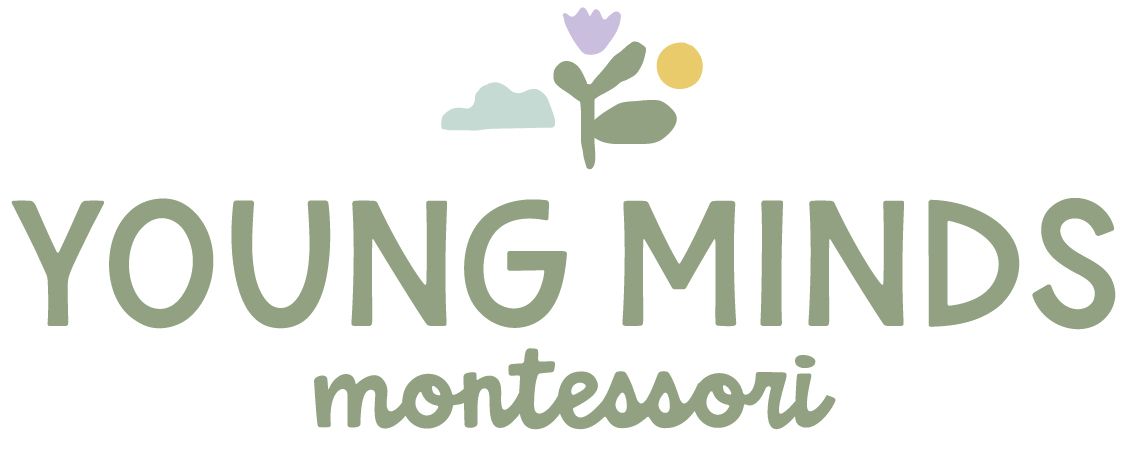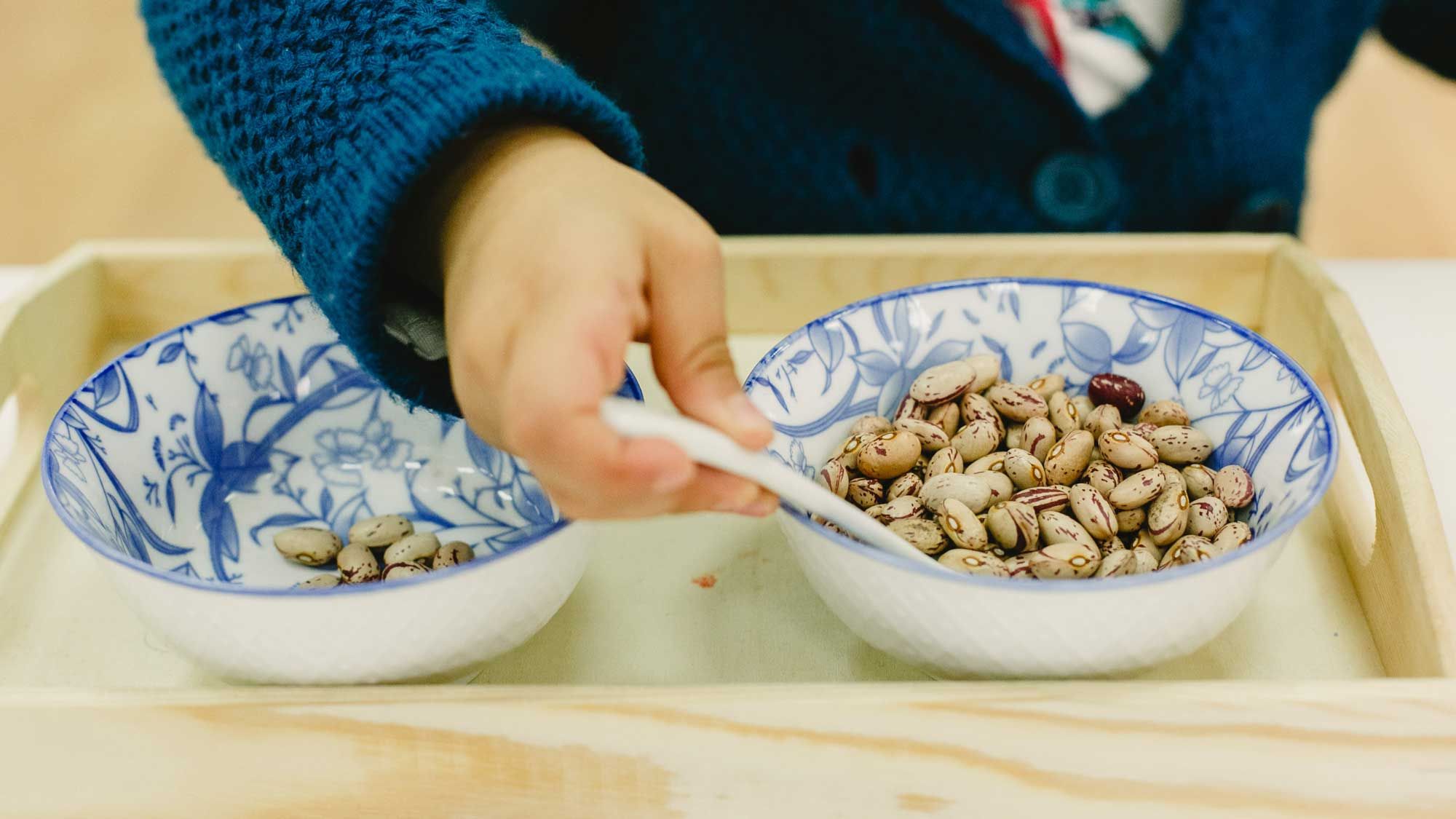The Montessori curriculum has various major arenas in which students will learn and experience lessons
Practical Life In the Montessori philosophy, independence is valued, and it’s important for children to practice daily practical skills (caring for the classroom, caring for themselves and grace and courtesy) that are useful not only in the classroom but outside of the classroom as well. That is the focus of the practical life skills area of the classroom.
Younger children will learn how to roll and unroll mats, the proper way to handle the classroom material, pouring, spooning, transferring and tonging. You may see child-sized brooms and feather dusters so that children can practice cleaning up the classroom. There are also various types of dressing frames… button frame, buckle frame, snap frame and shoe lace frame. Also included is cutting vegetables and fruits.
These activities encourage good work habits, increase concentration, independence, and develop coordination. The Practical life activities prepare the child for all other subject areas of the classroom.
Sensorial Sensorial activities develop the senses of perception and discrimination for exploring and noticing small differences in patterns as well as fine motor function development in the hands. The sensorial area builds the child's concentration for a wider awakening of the senses and perception for distinguishing different qualities and patterns.
For example the child who has perceived the subtle differences of sounds in the sound cylinders will be more likely to perceive subtle differences in the phonetic sounds of letters. The grasping of small knobs on equipment enables a child to gain control over the small finger muscles he will use for writing. Sensorial materials you will find in the classroom include pink tower, brown stairs, red rods, color tablets, touch boards, bells, sound boxes and smelling jars.
It is through the five senses that the sensorial materials prepare the child to sharpen their abilities in learning reading, writing and mathematics.
Language The Language area of the Montessori classroom encourages development of early-literacy skills through the use of phonetic sounds.
Children are exposed to various types of phonetic awareness activities to build a strong literary foundation. Initial alphabet sounds are first introduced through the sandpaper letters and matching objects. Other activities include practicing fine motor skills by writing, vocabulary development, matching words and pictures, reading development with word lists, practicing parts of grammar (nouns, verbs, adjectives, etc.), creating sentences and reading silently.
The goal is to increase listening skills, comprehension, and vocabulary. The spoken language is the foundation for writing and then reading. Language is not an isolated topic but runs through the curriculum.
Math The Math area of the Montessori classroom encompasses the use of concrete materials for the recognition of numbers and the recognition of quantity as well.
Children are first introduced to sequential work including understanding of numbers through ten. They then progress to addition, subtraction, multiplication, and division concepts. They eventually reach the stage of skip counting and fractions. Activities dealing with mathematics are not implemented at a set pace, allowing the child to grow at their own natural pace. Hands-on materials are used such as number rods, sandpaper numbers, number boards, and spindle box.
Cultural The cultural studies area is where children will learn about the greater world around them. This area contains items pertaining to geography, history, science, art and music. In many classrooms, this is also where you’ll find items related to botany and zoology. You will see a great diversity of items in this area. There may be maps, globes and flags. There may be instruments, art work and art supplies. You may also find classroom plants in this area.
Geography allows children the opportunity to understand their own culture as well as many others. The children can relate and understand cultural diversity and ultimately come to appreciate differences between humankind.
History assists a child in learning about the concept of change. By looking at the seasons, studying the weather and changing the calendar daily it helps the child to establish a cycle of time. When a child’s birthday arrives there is a special lesson that occurs: a representation of the sun is placed on the floor and the birthday child holds the globe and walks around.
Science allows children to observe and work with hands-on experiments that will cultivate a lifelong interest in nature and discovering more about our unique world.
Art & music provides children the opportunity to express themselves. Children have an expressive and uninhibited experience of moving, dancing and singing among their school peers
Botany teaches the children about plants (what they look like, how to take care of them, how they grow, etc.) so that they may appreciate nature in a more organic way.
Zoology shows children animals from all around the world as well as where they live, their unique Eco-systems, what they eat, how they grow, etc.

